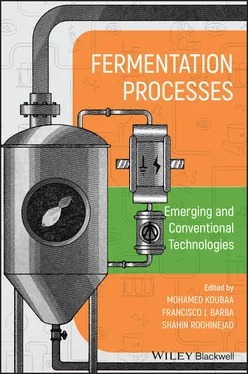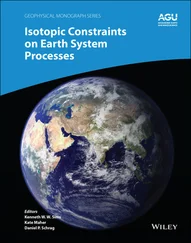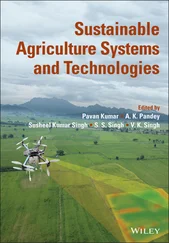Francisco J. Barba
Dr. Francisco J. Barba is an associate professor in Nutrition and Food Science and Technology, Faculty of Pharmacy, University of Valencia, Spain. He holds a European PhD (with distinction) from the University of Valencia and has obtained degrees in Pharmacy, Food and Technology. He performed postdoctoral stays in the Université de Technologie de Compiègne (UTC), Département de Génie des Procédés Industriels, Laboratoire Transformations Intégrées de la Matière Renouvelable (Compiegne, France), and Marie Curie IEF in the Department of Food Chemistry (University of Copenhagen) to explore different non‐thermal applications for preserving and extracting bioactive compounds from plant food materials and by‐products. Prior to his current appointment, he was also engaged as a visiting researcher in the Department of Food Biotechnology and Food Process Engineering in Technological University of Berlin, Germany. His research focus is on innovative food processing technologies such as high‐pressure processing, supercritical fluids, electrotechnologies, ultrasound, and microwaves for preservation and/or extraction of bioactive compounds from liquid and solid food. He has more than 300 publications to his credit, including more than 250 published or accepted peer‐reviewed papers in international journals in the food science and technology area (h‐index = 53, SCOPUS). He has been included in the Highly Cited Researchers 2019, 2020 list, the latest classification of the Clarivate Analytics bibliometric data provider. Dr. Barba currently serves as associate editor for prestigious journals such as Food Research International , Journal of Food Composition and Analysis , Journal of Food Processing and Preservation , Antioxidants , Foods , Molecules , and Frontiers in Nutrition , among others.
Shahin Roohinejad
Dr. Shahin Roohinejad obtained his BSc in 2000 in the field of food science and technology from the Islamic Azad University, Iran. He completed his MSc in food biotechnology at the University Putra Malaysia (UPM) in 2009. In July 2011, he received a full doctoral scholarship award from the Department of Food Science at the University of Otago in New Zealand and graduated in December 2014. In 2015, he received the Georg Forster Research Fellowship Award granted by the Alexander von Humboldt Foundation to pursue his postdoctoral research at the Department of Food Technology and Bioprocess Engineering, Max Rubner‐Institut (MRI), the German Federal Research Institute of Nutrition and Food. He joined the Department of Food Science and Nutrition, University of Minnesota as a Postdoctoral Research Associate in 2017. Followingly he started to work as a Research Scientist at Tillamook County Creamery Association in Oregon, USA in 2018. Currently, he is a Senior Scientist ‐ Next Generation Oral Products at Reynolds American Inc., USA. He is a professional member of the Institute of Food Technologists (IFT), a member of IFT Press Advisory Group, and a Global Harmonization Initiative Ambassador in the USA. In the last 15 years, he has been working on different food areas such as fermentation, emerging food processing, emulsion‐based systems, nanotechnology, and functional foods. His research activities have resulted in more than 100 original papers in peer‐reviewed journals, book chapters, abstracts, and short papers in congress proceedings.
Marina Al DaccacheFaculté des Sciences, Centre d'Analyses et de Recherche, UR TVA, Laboratoire CTA, Université Saint‐Joseph, Beyrouth, Lebanon
Francisco J. BarbaFaculty of Pharmacy, Preventive Medicine and Public Health, Food Science, Toxicology and Forensic Medicine Department, Universitat de València, València, Spain
Ivonne DelgadilloEscola Superior de Biotecnologia, Universidade Católica Portuguesa, Porto, Portugal
LAQV‐REQUIMTE, Department of Chemistry, University of Aveiro, Aveiro, Portugal
Ana M. GomesEscola Superior de Biotecnologia, Universidade Católica Portuguesa, Porto, Portugal
Seyedeh‐Sara HashemiBurn & Wound Healing Research Center, Shiraz University of Medical Science, Shiraz, Iran
Mahdi IraniDepartment of Food Science and Technology, Ferdowsi University of Mashhad (FUM), Mashhad, Iran
Sucheta KhubberFood Engineering and Nutrition, Center of Innovative and Applied Bioprocessing, Mohali, India
Mohamed KoubaaESCOM, UTC, EA 4297 TIMR, Compiègne, France
Rita P. LopesLAQV‐REQUIMTE, Department of Chemistry, University of Aveiro, Aveiro, Portugal
Jose M. LorenzoCentro Tecnológico de la Carne, Parque Tecnológico de Galicia, Ourense, Spain
Nicolas LoukaFaculté des Sciences, Centre d’Analyses et de Recherche, UR TVA, Laboratoire CTA, Université Saint‐Joseph, Beyrouth, Lebanon
Richard G. MarounFaculté des Sciences, Centre d’Analyses et de Recherche, UR TVA, Laboratoire CTA, Université Saint‐Joseph, Beyrouth, Lebanon
Krystian MarszałekDepartment of Fruit and Vegetable Product Technology, Prof. Wacław Dąbrowski Institute of Agricultural and Food Biotechnology, Warsaw, Poland
Department of Food Technology and Human Nutrition, Institute of Food Technology and Nutrition, College of Natural Science, University of Rzeszow, Rzeszow, Poland
Francisco J. Marti‐QuijalFaculty of Pharmacy, Preventive Medicine and Public Health, Food Sciences, Toxicology and Forensic Medicine Department, Universitat de València, València, Spain
Maria J. MotaLAQV‐REQUIMTE, Department of Chemistry, University of Aveiro, Aveiro, Portugal
Maryam NejadmansouriDepartment of Food Science and Technology, College of Agriculture, Shiraz University, Shiraz, Iran
Mehrdad NiakousariDepartment of Food Science and Technology, College of Agriculture, Shiraz University, Shiraz, Iran
Alireza RafatiDivision of Pharmacology & Pharmaceutical Chemistry, Sarvestan Branch, Islamic Azad University, Sarvestan, Iran
Maryam RazmjooeiDepartment of Food Science and Technology, College of Agriculture, Shiraz University, Shiraz, Iran
Fabienne RemizeUMR QualiSud, Université de La Réunion, CIRAD, Université Montpellier, Institut Agro, Université d'Avignon, Sainte Clotilde, France
Shahin RoohinejadBurn & Wound Healing Research Center, Shiraz University of Medical Science, Shiraz, Iran
Dominique SalamehFaculté des Sciences, Centre d’Analyses et de Recherche, UR ‐ EGP, Laboratoire E2D, Université Saint‐Joseph, Beyrouth, Lebanon dominique.salameh@usj.edu.lbFaculté des Sciences, Centre d’Analyses et de Recherche, UR ‐ EGP, Laboratoire E2D, Université Saint‐Joseph, Beyrouth, Lebanon
Jorge A. SaraivaQOPNA, Chemistry Department, University of Aveiro, Aveiro, Portugal LAQV‐REQUIMTE, Department of Chemistry, University of Aveiro, Aveiro, Portugal
Sylwia SkąpskaDepartment of Fruit and Vegetable Product Technology, Institute of Agricultural and Food Biotechnology, Warsaw, Poland
Justyna SzczepańskaDepartment of Fruit and Vegetable Product Technology, Institute of Agricultural and Food Biotechnology, Warsaw, Poland
Igor TomasevicFaculty of Agriculture, University of Belgrade, Belgrade, Serbia
Artur WiktorFaculty of Food Sciences, Department of Food Engineering and Process Management, Warsaw University of Life Sciences (WULS‐SGGW), Warsaw, Poland
Читать дальше












